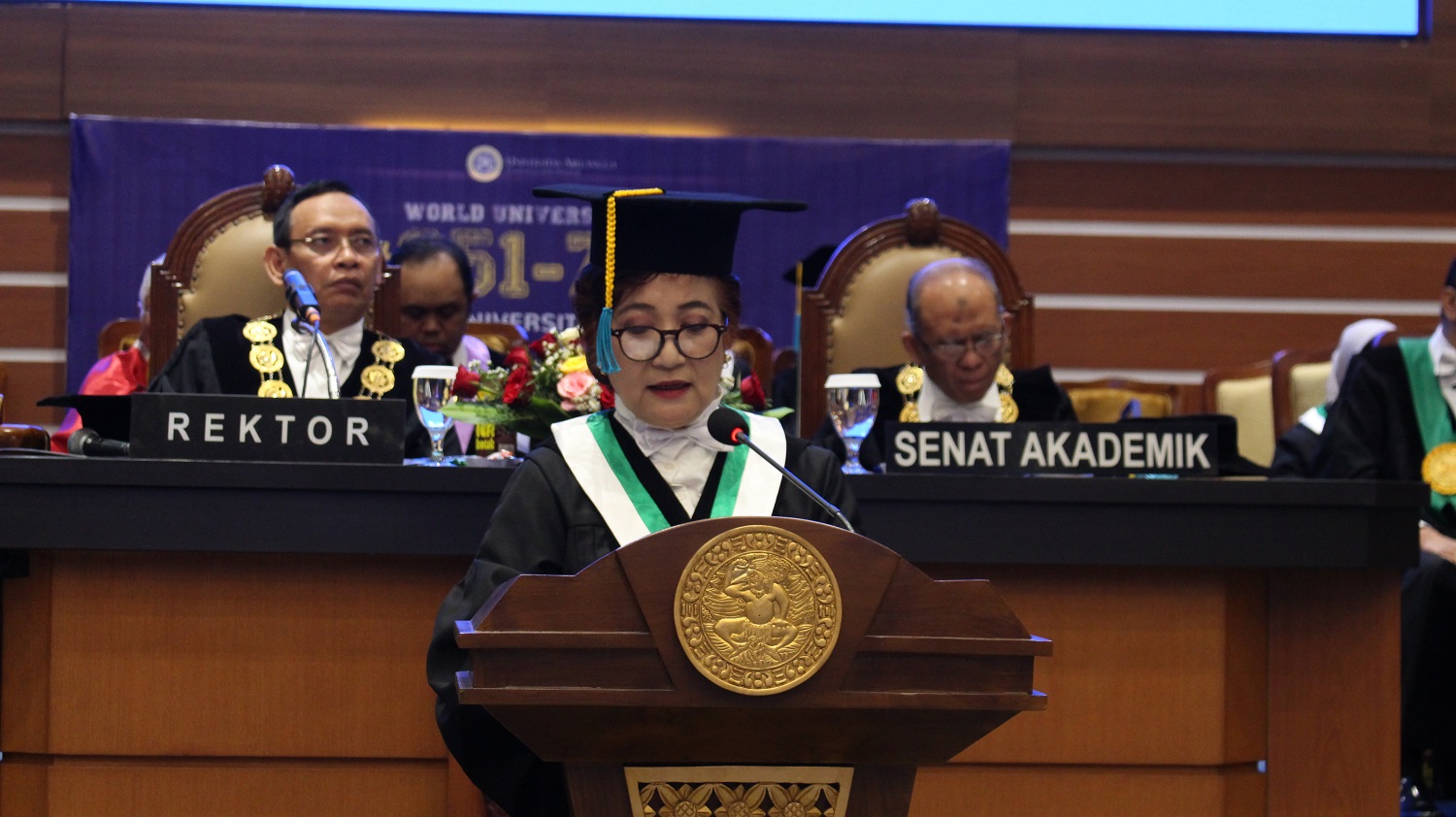UNAIR NEWS – The main goal of dentistry is to help treatment and improve quality of life of patients. It can be done through preventive measures, pain relief, to dental restoration. Therefore, it is needed appropriate material for a particular purpose and always develops along with time.
For example, the use of material in dental restoration process is estimated to have begun since around 3000 BC. Archaeologists have found evidence that in ancient times there were ancient health services that could diagnose bad teeth, extract, and replace teeth that had been extracted by wire material or gold plates.
In her speech at the professorship inauguration ceremony of Universitas Airlangga (UNAIR) on Saturday, December 14, Prof. Dr. Rr. Asti Meizarini, drg., M.S., explained the development of porcelain material. Early porcelain crowns were arranged using feldspar as the main material. Then in 1903, it was made with feldspathic by Land.
“It has good aesthetics, but in terms of flexural strength is still low so the risk of clinical failure is higher. To make the porcelain crown stronger, a metal frame is used. Furthermore, in 1962 leucite was added to improve the thermal coefficient of expansion between the metal frame and porcelain, ” she said.
The 22nd professor of Faculty of Dental Medicine (FKG) UNAIR continued, the development continued until 1965 when the first all-ceramic crown was made by McLean and Hughes. This material was reinforced with 40-50% aluminum oxide coated with feldspathic porcelain to improve aesthetics.
“Nowadays, the manufacture of all ceramic restorations is done through casting, heat-pressed, or machined because it can be controlled better. It was initiated by Grossman and introduced to the dentist community in 1984. This material is called casted. Unfortunately, it still has weaknesses in terms of flexural strength, ” explained Prof. Asti.
Some methods for making dental restoration material continue to be developed, They even reached into computing and machinery, such as computer-aided design / computer-aided manufacturing (CAD / CAM) with Cerec System developed by Dr. Moermann in 1982, In-Ceram System (1989) to the restoration of Procera (1993).
To support the ability of the machine in the process of making dental restoration material, the addition of other materials with fine microstructure includes aluminate-leucite, leucite glass ceramics, lithium disilicate glass ceramics, infiltrated oxide ceramics, infiltrated Spinell glass, and glass-infiltrated zirconia alumina.
“Making dental restoration material is easier because of the existence of artificial intelligence (AI), so conventional systems are no longer needed. Patients also benefit because there is no need to do the oral molding process. Hopefully, the AI development can be followed with the results of new ceramic material research, ” concluded Prof. Asti (*)
Author: Nabila Amelia
Editor : Binti Q. Masruroh





